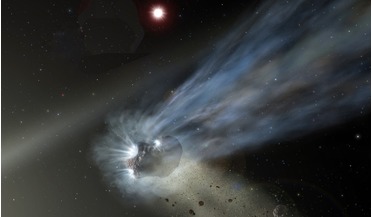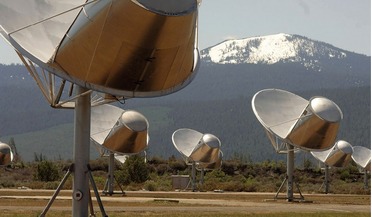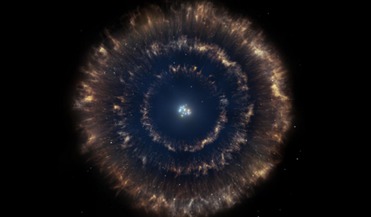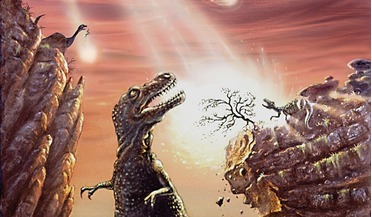 20 April 2020
New research shows interstellar visitor 21/Borisov is not your average comet
20 April 2020
New research shows interstellar visitor 21/Borisov is not your average comet
...interloper, which soon became identified as the second known interstellar object to visit our Solar System, comet 2I/Borisov. ..., its foray through the cold expansive wastes of interstellar space helped preserve its chemical make-up for millions or ...
 21 June 2021
Astronomers using GBT discover previously unknown huge galactic structure
21 June 2021
Astronomers using GBT discover previously unknown huge galactic structure
...in these regions as neutral hydrogen atoms (those that have not lost an electron) at temperatures typical of the gas in interstellar space neither emit nor absorb light in the visible part of the spectrum. H2 is known to produce a signal known as the...
 August 2020
Interstellar aspirations
August 2020
Interstellar aspirations
... costs. There are myriads of major technical challenges, including potential hazards with interstellar space travel, such as impacts by dust particles and interstellar atoms. However, the programme has identified three key technical challenges that...
 09 June 2017
Key ingredients to life found around Sun-like stars
09 June 2017
Key ingredients to life found around Sun-like stars
... that the molecule can be formed at extremely cold interstellar temperatures, down to 15 Kelvin (–258 degrees Celsius),... under very cold conditions that are similar to those in interstellar space. This implies that this molecule, and thus the basis ...
 25 July 2016
Supernova "Matryoshka" Discovered in Local Group
25 July 2016
Supernova "Matryoshka" Discovered in Local Group
... times that of the sun) with the BUBBLY program (a method for detecting giant expanding bubbles of gas in interstellar space), researchers discovered a triple-bubble. The results of their research were published in the Monthly Notices of the Royal...
 February 2016
Is Jupiter Really Our Protective Shield?
February 2016
Is Jupiter Really Our Protective Shield?
... Even though most of the Solar System’s last surviving planetesimals were either accreted by planets or ejected into interstellar space billions of years ago [13][14][15], Earth is still hit by these Solar System leftovers on a regular basis. A study...